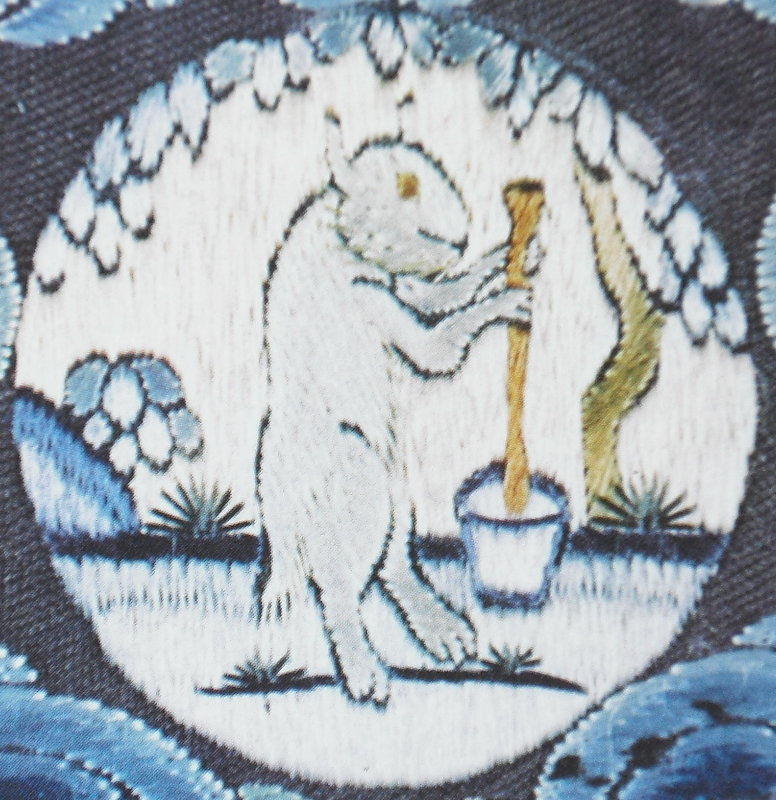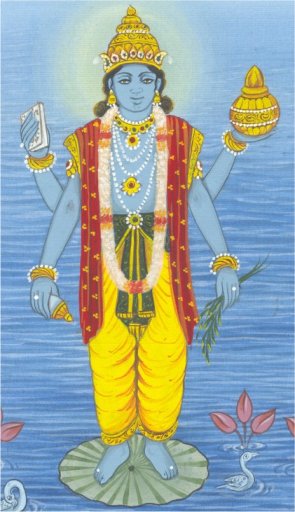|
Amrita
''Amrita'' (, IAST: ''amṛta''), ''Amrit'' or ''Amata'' in Pali language, Pali, (also called ''Sudha'', ''Amiy'', ''Ami'') is a Sanskrit word that means "immortality". It is a central concept within Indian religions and is often referred to in ancient Indian texts as an Elixir of life, elixir. Its first occurrence is in the Rigveda, where it is considered one of several synonyms for ''soma (drink), soma'', the drink of the Deva (Hinduism), devas. Amrita plays a significant role in the Samudra manthan, Samudra Manthana, and is the cause of the conflict between devas and asuras competing for amrita to obtain immortality. Amrita has varying significance in different Indian religions. The word ''Amrit'' is also a common first name for Sikhs and Hindus, while its feminine form is ''Amritā''. Amrita is cognate to and shares many similarities with ambrosia; both originated from a common Proto-Indo-European mythology, Proto-Indo-European source."Ambrosia" in ''Chambers's Encyclopædi ... [...More Info...] [...Related Items...] OR: [Wikipedia] [Google] [Baidu] |
Mohini With Amrit
Mohini (Sanskrit: मोहिनी, ') is the Hindu goddess of enchantment. She is the only female avatar of the Hindu god Vishnu. She is portrayed as a ''femme fatale'', an enchantress, who maddens lovers and demons, sometimes leading them to their doom. Mohini is introduced into Hinduism in the narrative epic of the ''Mahabharata''. Here, she appears as a form of Vishnu following the Churning of the Ocean, a mesmerising beauty who distributes the amrita (the elixir of immortality) to the weakened devas (gods) and depriving it to the dominant asuras (demons), allowing the former to defeat the latter with their newfound immortality. Many different legends tell of her various exploits and marriages, including her union with the god Shiva. These tales relate, among other things, the birth of the god Shasta and the destruction of Bhasmasura, the ash-demon. Mohini's main ''modus operandi'' is to trick or beguile those she encounters. She is worshipped throughout Indian culture, ... [...More Info...] [...Related Items...] OR: [Wikipedia] [Google] [Baidu] |
Samudra Manthan
The Samudra Manthana () is a major episode in Hinduism that is elaborated in the Vishnu Purana, a major text of Hinduism. The Samudra Manthana explains the origin of the elixir of eternal life, amrita. Nomenclature *Sāgara manthana (सागरमन्थन) – ''Sāgara'' is another word for '' Samudra'', both meaning a sea or large water body. *Kshirasāgara manthana (क्षीरसागरमन्थन) – ''Kshirasāgara'' means the ocean of milk or milky ocean. ''Kshirasāgara'' = ''Kshira'' (milk) + ''Sāgara'' (ocean or sea). *Amrita Manthana (अमृतमन्थन) – ''Amrita'' means the elixir. “''Churning for the Elixir”'' Legend Indra, the King of Svarga, was riding on his divine elephant when he came across the sage Durvasa, who offered him a special garland given to him by an apsara. The deity accepted the garland and placed it on the trunk (sometime the tusks or the head of the elephant in some scriptures) of Airavata (his mount) as a tes ... [...More Info...] [...Related Items...] OR: [Wikipedia] [Google] [Baidu] |
Elixir Of Life
The elixir of life (Medieval Latin: ' ), also known as elixir of immortality, is a potion that supposedly grants the drinker Immortality, eternal life and/or eternal youth. This elixir was also said to Panacea (medicine), cure all diseases. Alchemy, Alchemists in various ages and cultures sought the means of formulating the elixir. History Ancient Mesopotamia An early mention of an elixir of life is found in the Epic of Gilgamesh (from the 2nd millennium BC) in which Gilgamesh comes to fear his own declining years following the death of his beloved companion Enkidu. He seeks out Utnapishtim, a figure in Mesopotamian mythology known for surviving a great flood sent by the gods and being granted immortality. Gilgamesh is directed by Utnapishtim to find a plant at the bottom of the sea, but he loses it to a serpent before he can use it himself. This legend is an archaic explanation for snakes shedding their skin, seen as mystical rejuvenation. China Many rulers of ancient C ... [...More Info...] [...Related Items...] OR: [Wikipedia] [Google] [Baidu] |
Dhanvantari
Dhanvantari () is the physician of the devas in Hinduism. He is regarded as an avatar of Vishnu. He is mentioned in the Puranas as the god of Ayurveda. During his incarnation on earth, he reigned as the King of Kashi, today locally referred to as Varanasi. Dhanvantari is also identified as the great-grandfather of Divodasa, the King of Kashi mentioned in the Vishnu Purana who is known as the father of surgery in Ayurveda. Iconography According to the ancient Sanskrit work ''Vishnudharamottara'', Dhanvantari is a handsome individual and is to usually be depicted with four hands, with one or two of them carrying a bowl of amrita, the elixir of immortality. Dhanvantari is depicted in a stark resemblance to Vishnu, with four hands, holding the shankha, chakra, jalauka (herb), and a pot containing amrita. He is often shown with a leech in his hand rather than the scriptures, symbolism for the historical practice of bloodletting. Some texts describe him as holding a conch, amr ... [...More Info...] [...Related Items...] OR: [Wikipedia] [Google] [Baidu] |
Ambrosia
In the ancient Greek mythology, Greek myths, ambrosia (, ) is the food or drink of the Greek gods, and is often depicted as conferring longevity or immortality upon whoever consumed it. It was brought to the gods in Mount Olympus, Olympus by doves and served either by Hebe (mythology), Hebe or by Ganymede (mythology), Ganymede at the Feast of the Gods (art) , heavenly feast. Ancient art sometimes depicted ambrosia as distributed by the nymph named Ambrosia (Hyades) , Ambrosia, a nurse of Dionysus. Definition Ambrosia is very closely related to the gods' other form of sustenance, ''Nectar#Etymology, nectar''. The two terms may not have originally been distinguished; though in Homer's poems nectar is usually the drink and ambrosia the food of the gods; it was with ambrosia that Hera "cleansed all defilement from her lovely flesh", and with ambrosia Athena prepared Penelope in her sleep, so that when she appeared for the final time before her suitors, the effects of years had be ... [...More Info...] [...Related Items...] OR: [Wikipedia] [Google] [Baidu] |
Soma (drink)
In the Vedic tradition, ''soma'' () is a ritual drink of importance among the early Vedic Indo-Aryans. The Rigveda mentions it, particularly in the Soma Mandala. Gita mentions the drink in chapter 9. It is equivalent to the Iranian haoma. The texts describe the preparation of soma by means of extracting the juice from a plant, the identity of which is now unknown and debated among scholars. Both in the ancient religions of Historical Vedic religion and Zoroastrianism, the name of the drink and the plant are not exactly the same.Victor Sarianidi, Viktor Sarianidi in The PBS Documentary The Story of India There has been much speculation about the most likely identity of the original plant. Traditional Indian accounts, such as those from practitioners of Ayurveda, Siddha medicine, and Somayajna called Somayajis, identify the plant as "Somalata" ('' Cynanchum acidum''). Non-Indian researchers have proposed candidates including ''Amanita muscaria'', ''Psilocybin'' mushroo ... [...More Info...] [...Related Items...] OR: [Wikipedia] [Google] [Baidu] |
Nectar
Nectar is a viscous, sugar-rich liquid produced by Plant, plants in glands called nectaries, either within the flowers with which it attracts pollination, pollinating animals, or by extrafloral nectaries, which provide a nutrient source to animal Mutualism (biology), mutualists, which in turn provide plant defense against herbivory#Indirect defenses, herbivore protection. Common nectar-consuming pollinators include mosquitoes, hoverfly, hoverflies, wasps, bees, butterfly, butterflies and moths, hummingbirds, honeyeaters and Bat#Fruit and nectar, bats. Nectar is an economically important substance as it is the sugar source for honey. It is also useful in agriculture and horticulture because the adult stages of some predatory insects feed on nectar. For example, a number of predacious or Parasitoid wasp, parasitoid wasps (e.g., the social wasp species ''Apoica flavissima'') rely on nectar as a primary food source. In turn, these wasps then hunt agricultural pest insects as food ... [...More Info...] [...Related Items...] OR: [Wikipedia] [Google] [Baidu] |
George Newnes Ltd
George Newnes Ltd is a British publisher. The company was founded in 1891 by George Newnes (1851–1910), considered a founding father of popular journalism. Newnes published such magazines and periodicals as '' Tit-Bits'', '' The Wide World Magazine'', '' The Captain'', '' The Strand Magazine'', '' The Grand Magazine'', '' John O'London's Weekly'', '' Sunny Stories for Little Folk'', '' Woman's Own'', and the ''"Practical"'' line of magazines overseen by editor Frederick J. Camm. Long after the founder's death, Newnes was known for publishing ground-breaking consumer magazines such as '' Nova''. Newnes published books by such authors as Enid Blyton, Hall Caine, Richmal Crompton, Sir Arthur Conan Doyle, George Goodchild, W. E. Johns, P. G. Wodehouse, and John Wyndham. Initially an independent publisher, Newnes became an imprint of the International Publishing Company in 1961. Today, books under the Newnes imprint continue to be published by Elsevier. History Origins ... [...More Info...] [...Related Items...] OR: [Wikipedia] [Google] [Baidu] |
Ablaut
In linguistics, the Indo-European ablaut ( , from German ) is a system of apophony (regular vowel variations) in the Proto-Indo-European language (PIE). An example of ablaut in English is the strong verb ''sing, sang, sung'' and its related noun ''song'', a paradigm inherited directly from the Proto-Indo-European stage of the language. Traces of ablaut are found in all modern Indo-European languages, though its prevalence varies greatly. History of the concept The phenomenon of Indo-European ablaut was first recorded by Sanskrit grammarians in the later Vedic period (roughly 8th century BCE), and was codified by Pāṇini in his ''Aṣṭādhyāyī'' (4th century BCE), where the terms ' and '' '' were used to describe the phenomena now known respectively as the ''full grade'' and ''lengthened grade''.Burrow, §2.1. In the context of European languages, the phenomenon was first described in the early 18th century by the Dutch linguist Lambert ten Kate, in his book ''G ... [...More Info...] [...Related Items...] OR: [Wikipedia] [Google] [Baidu] |
Proto-Indo-European Language
Proto-Indo-European (PIE) is the reconstructed common ancestor of the Indo-European language family. No direct record of Proto-Indo-European exists; its proposed features have been derived by linguistic reconstruction from documented Indo-European languages. Far more work has gone into reconstructing PIE than any other proto-language, and it is the best understood of all proto-languages of its age. The majority of linguistic work during the 19th century was devoted to the reconstruction of PIE and its daughter languages, and many of the modern techniques of linguistic reconstruction (such as the comparative method) were developed as a result. PIE is hypothesized to have been spoken as a single language from approximately 4500 BCE to 2500 BCE during the Late Neolithic to Early Bronze Age, though estimates vary by more than a thousand years. According to the prevailing Kurgan hypothesis, the original homeland of the Proto-Indo-Europeans may have been in the Pon ... [...More Info...] [...Related Items...] OR: [Wikipedia] [Google] [Baidu] |







